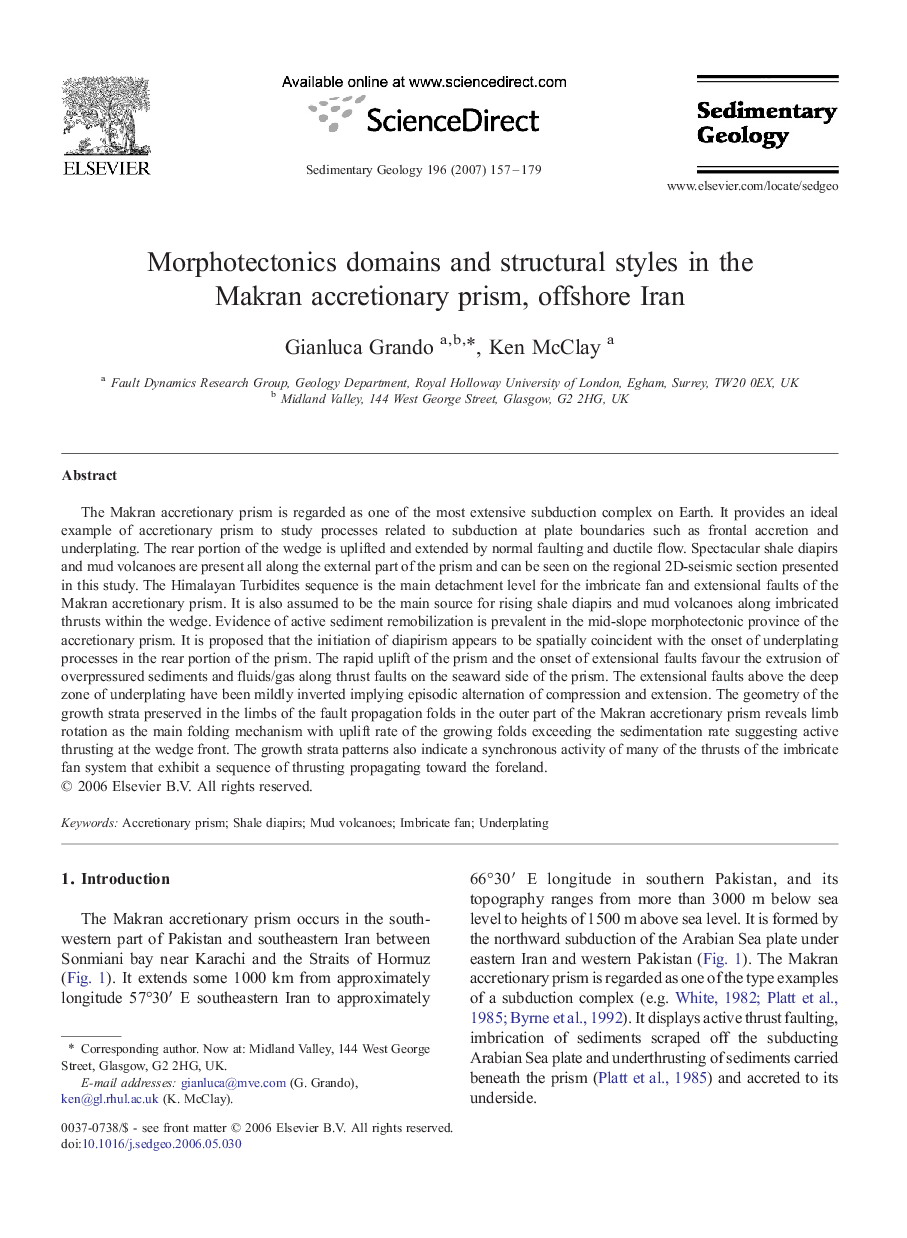| کد مقاله | کد نشریه | سال انتشار | مقاله انگلیسی | نسخه تمام متن |
|---|---|---|---|---|
| 4690825 | 1636173 | 2007 | 23 صفحه PDF | دانلود رایگان |

The Makran accretionary prism is regarded as one of the most extensive subduction complex on Earth. It provides an ideal example of accretionary prism to study processes related to subduction at plate boundaries such as frontal accretion and underplating. The rear portion of the wedge is uplifted and extended by normal faulting and ductile flow. Spectacular shale diapirs and mud volcanoes are present all along the external part of the prism and can be seen on the regional 2D-seismic section presented in this study. The Himalayan Turbidites sequence is the main detachment level for the imbricate fan and extensional faults of the Makran accretionary prism. It is also assumed to be the main source for rising shale diapirs and mud volcanoes along imbricated thrusts within the wedge. Evidence of active sediment remobilization is prevalent in the mid-slope morphotectonic province of the accretionary prism. It is proposed that the initiation of diapirism appears to be spatially coincident with the onset of underplating processes in the rear portion of the prism. The rapid uplift of the prism and the onset of extensional faults favour the extrusion of overpressured sediments and fluids/gas along thrust faults on the seaward side of the prism. The extensional faults above the deep zone of underplating have been mildly inverted implying episodic alternation of compression and extension. The geometry of the growth strata preserved in the limbs of the fault propagation folds in the outer part of the Makran accretionary prism reveals limb rotation as the main folding mechanism with uplift rate of the growing folds exceeding the sedimentation rate suggesting active thrusting at the wedge front. The growth strata patterns also indicate a synchronous activity of many of the thrusts of the imbricate fan system that exhibit a sequence of thrusting propagating toward the foreland.
Journal: Sedimentary Geology - Volume 196, Issues 1–4, 15 March 2007, Pages 157–179